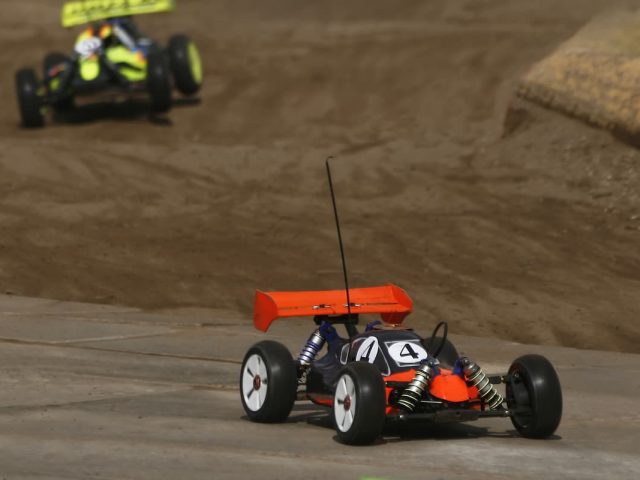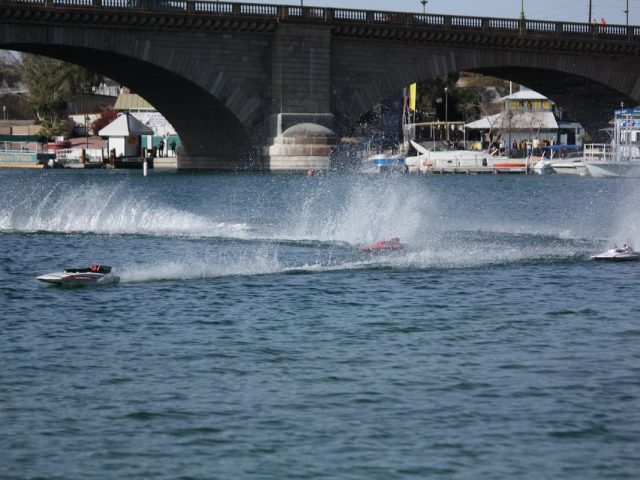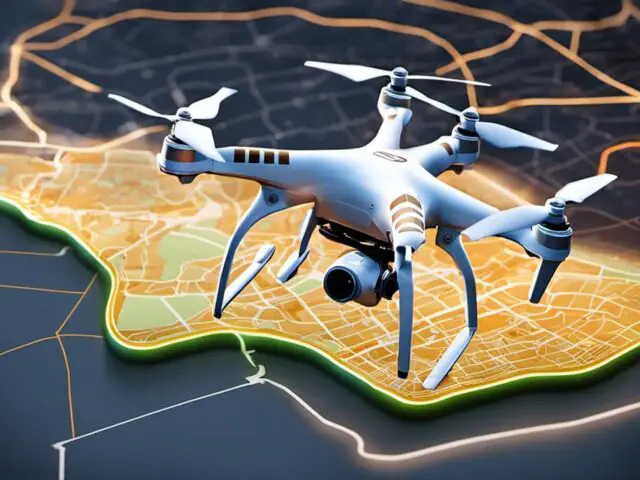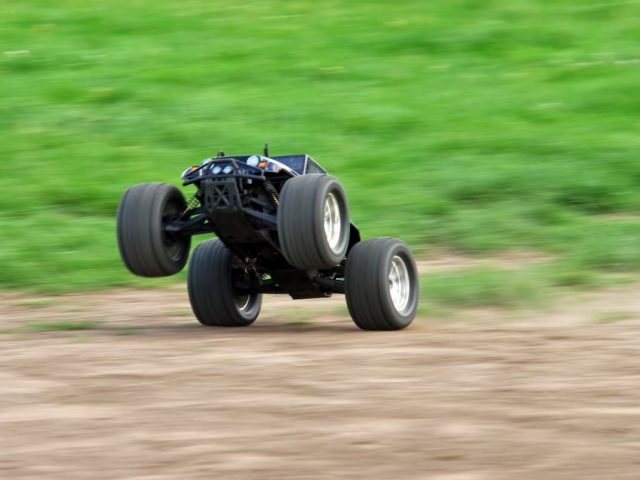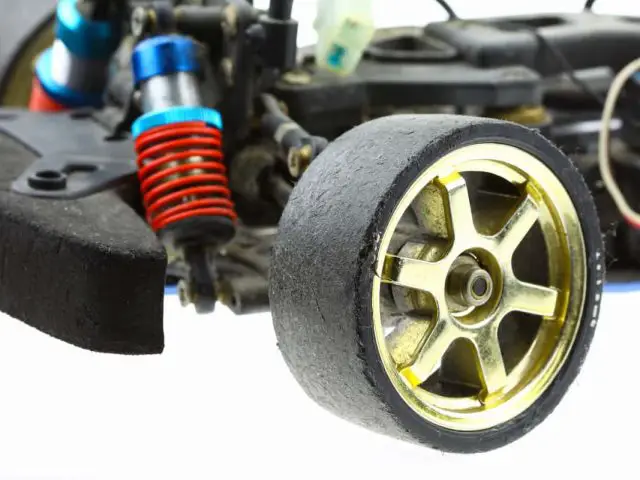FPV drone racing has exploded in popularity over the past few years, attracting thrill-seekers and tech enthusiasts alike. With its fast-paced action and adrenaline-inducing maneuvers, it’s no wonder why this sport has captured the attention of so many. However, like any other competitive activity, there are rules and regulations that must be followed in order to ensure a safe and fair competition. Lets take a closer look at the rules and regulations of FPV drone racing and how you can navigate them like a pro to take your skills to the next level.
Understanding the Basics of FPV Drone Racing
FPV drone racing is an exhilarating and high-speed sport that combines the thrill of piloting a drone with the excitement of competition. It involves racing small, agile drones through challenging courses at breakneck speeds. But before you can become a pro at FPV drone racing, it’s important to understand the basics.
Firstly, FPV stands for “first-person view,” which means that the pilot uses a live video feed from a camera mounted on the drone to navigate and control it. This perspective gives a sense of immersion, as if you are flying inside the drone itself.
To participate in FPV drone racing, you’ll need a few essential components. The most crucial is a racing drone, specifically designed for speed and agility. These drones are lightweight, compact, and equipped with powerful motors to achieve high speeds. Additionally, you’ll need FPV goggles or a monitor to receive the live video feed from the drone’s camera.
Flying an FPV drone requires skill and practice. Pilots need to have a solid understanding of flight controls, maneuvering techniques, and racing strategies. It’s important to master skills such as throttle control, pitch and roll, yaw, and making quick and precise turns.
To enhance your skills, consider joining a local FPV drone racing club or community. These groups provide opportunities for training, practice sessions, and friendly competitions. Networking with experienced pilots can also provide valuable insights and tips to improve your racing abilities.
Official Rules and Regulations for FPV Drone Racing
The official rules and regulations for FPV drone racing vary depending on the organization or event. However, there are some general rules that apply to most FPV drone races.
FPV drone racing is an exciting and fast-paced sport, but it’s crucial to understand and follow the official rules and regulations to ensure a fair and safe competition. While these rules may vary slightly depending on the race organizer and location, there are some common guidelines that every FPV drone racer should know.
First, familiarize yourself with the specific rules of the race you are participating in. This includes knowing the start and finish line, the number of laps, and any specific obstacles or gates you need to pass through. Additionally, understanding the timing system used, whether it’s based on lap times or cumulative time, is crucial for strategizing your race.
Safety
Safety is a top priority in FPV drone racing. It’s essential to follow regulations regarding drone weight limits, power limits, and safety equipment requirements. Many races require pilots to wear goggles or safety glasses to protect their eyes during the race. Understanding and adhering to these safety protocols not only keeps you safe but also ensures a fair playing field for all competitors. All pilots must be familiar with the safety rules and regulations, and they must follow them at all times. Some of the most important safety rules include:
- Always fly in a safe location, away from people and obstacles.
- Maintain visual line-of-sight (VLOS) with your drone at all times.
- Do not fly in restricted airspace, such as near airports or military bases.
- Be aware of your surroundings and other pilots in the area.
Penalties
Another one of the rules and regulations is understanding the penalties and disqualification criteria. Races often have specific rules regarding crossing the track boundary, hitting obstacles, or intentionally obstructing other racers. Being aware of these rules and the consequences of breaking them is essential to avoid penalties or disqualification.
Pilots who break the race rules may be penalized. Common penalties include:
- Time penalties
- Disqualification
Race Format
FPV drone races are typically held on obstacle-filled courses. Pilots must fly their drones through the course as quickly as possible without hitting any obstacles. The pilot with the fastest time wins the race.
Race Rules
Some of the most common race rules include:
- Pilots must start the race behind a starting line.
- Pilots must fly their drones through all of the obstacles on the course.
- Pilots must not touch their drones with their hands during the race.
- Pilots must land their drones at the designated finish line.
Organization and Events
There are many different organizations that host FPV drone races. Some of the most popular organizations include:
- Drone Racing League (DRL)
- MultiGP
- FPV Freedom Coalition
Key Requirements for Participating in FPV Drone Racing
To participate in FPV drone racing, there are several key requirements that you must meet. First and foremost, you will need a racing drone that is specifically designed for this sport. These drones are built for speed and agility, so be sure to choose one that is lightweight and equipped with powerful motors. Additionally, you will need FPV goggles or a monitor to receive the live video feed from the drone’s camera. These goggles or monitor will allow you to have a first-person view of the race, adding to the immersive experience.
In addition to the equipment, there are also certain skills and knowledge that are required to participate in FPV drone racing. You must have a solid understanding of flight controls, maneuvering techniques, and racing strategies. Skills such as throttle control, pitch and roll, yaw, and making quick and precise turns are essential for success in this sport.
Lastly, it’s important to note that many races have age restrictions for participants. Some races may require you to be at least 18 years old, while others may have a minimum age of 14 or 16. Be sure to check the specific requirements of the race you plan to participate in.
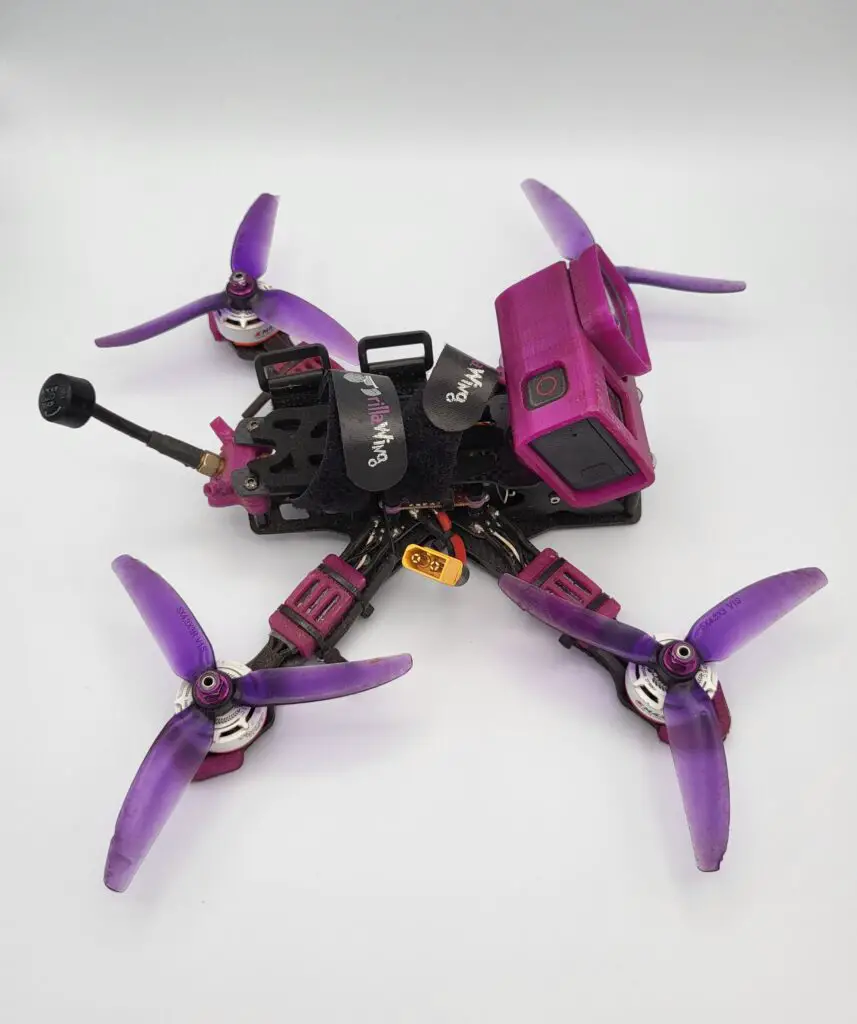
The Do’s and Don’ts of FPV Drone Racing
Here’s a list of do’s and don’ts for FPV (First Person View) drone racing to help both beginners and experienced racers navigate the sport safely and effectively:
Do’s:
- Start with a Simulator: Before flying real FPV drones, practice on a simulator to develop your piloting skills and learn the basics of drone racing.
- Learn the Basics: Understand the fundamentals of drone components, such as the flight controller, ESCs, and motors. Learn about the different drone classes (e.g., 3″, 5″, 7″ drones) and their ideal use cases.
- Safety First: Always prioritize safety. Wear appropriate safety gear, including FPV goggles, and ensure that your flying area is clear of people and obstacles.
- Master the Controls: Practice flying in different modes (Acro, Angle, and Horizon) and get comfortable with throttle control, pitch, and roll.
- Understand PID Tuning: Learn the basics of PID tuning to fine-tune your drone’s performance and make it more responsive to your inputs.
- Check Local Laws: Familiarize yourself with local and national drone regulations. Ensure you have the necessary permits and permissions when flying in public areas.
- Join a Racing League: Consider joining a local or online FPV racing community to learn from experienced pilots, share knowledge, and participate in organized races.
- Invest in Quality Equipment: Invest in reliable and durable equipment, including a good transmitter, quality FPV goggles, and well-built drones.
- Practice, Practice, Practice: Consistent practice is essential for improving your racing skills. Set up a practice track or join group practice sessions to refine your abilities.
Don’ts:
- Don’t Skip Simulators: Avoid skipping simulator training. Starting with real drones without prior experience can lead to crashes and frustration.
- Don’t Neglect Safety Gear: Never fly without safety gear, including FPV goggles. Eye protection is crucial to prevent accidents and damage to your eyes.
- Don’t Fly Near People or Animals: Avoid flying near people, animals, or populated areas to reduce the risk of accidents or harm to others.
- Don’t Ignore Regulations: Always follow local regulations and airspace rules. Flying in restricted areas can lead to legal issues.
- Don’t Rush into High-Speed Racing: Don’t rush into high-speed racing without mastering basic flight maneuvers and control. Gradually work your way up to faster races.
- Don’t Neglect Maintenance: Regularly inspect and maintain your drone to ensure it’s in optimal condition. Neglecting maintenance can lead to crashes.
- Don’t Be Overconfident: Overconfidence can lead to reckless behavior and crashes. Stay humble and continue learning from your mistakes.
- Don’t Race Alone: Avoid racing alone in isolated areas. Having a spotter or fellow racers with you can help in case of emergencies or equipment issues.
- Don’t Fly Near Airports or Controlled Airspace: Never fly near airports or in controlled airspace. Violating airspace restrictions can have serious consequences.
Remember that FPV drone racing is an exciting and rewarding hobby, but it requires practice, patience, and responsibility. By following these do’s and don’ts, you can enjoy the sport while staying safe and progressing as a skilled pilot.
Safety Protocols and Equipment Standards
When it comes to FPV drone racing, safety is paramount. To ensure a safe and accident-free competition, there are specific safety protocols and equipment standards that every racer must adhere to. These protocols are designed to protect both the racers and spectators, and to minimize the risk of accidents or injuries.
First and foremost, it is crucial to wear the necessary safety equipment during a race. This includes goggles or safety glasses to protect the pilot’s eyes from any potential debris or collisions. Additionally, it is important to check the equipment before each race to ensure that it is in proper working condition. This includes inspecting the drone, its components, and the battery to make sure that everything is functioning as it should.
Furthermore, it is essential to maintain a safe distance from other racers during a race. Collisions can lead to serious accidents, so it is important to be aware of your surroundings and to exercise caution when maneuvering through the racecourse.
Lastly, it is important to be aware of any specific safety protocols and equipment standards set by the race organizer. These may include requirements such as drone weight limits, power limits, or specific safety features that need to be in place.
By following these safety protocols and equipment standards, you can ensure a safe and enjoyable FPV drone racing experience for everyone involved. Safety should always be the top priority, and by adhering to these guidelines, you can navigate the racecourse with confidence and professionalism.

Photo by jeisblack on Unsplash
International vs. local rules
FPV drone racing is not just a thrilling sport; it’s also subject to various regulations and guidelines on both local and international levels. These regulations are in place to ensure the safety of participants, spectators, and the general public. While the specific regulations may vary depending on the country or region, there are some common themes that are often seen.
Local regulations may include requirements for drone registration, pilot licensing, and flight restrictions in certain areas. It’s important for FPV drone racers to be aware of these regulations and follow them to avoid penalties or legal issues. Some areas may have designated spaces or tracks for drone racing, while others may require permits or authorization to fly.
On an international level, organizations such as the International Drone Racing Association (IDRA) and the Drone Racing League (DRL) have established their own rules and regulations for FPV drone racing. These organizations often host major competitions and set standards for safety, fair play, and competition format. Being familiar with these international regulations can be crucial for aspiring professional racers looking to compete at a higher level.
The Federal Aviation Administration (FAA) has specific regulations in place for flying drones. These regulations are designed to protect the public and airspace safety.
Here are some of the key FAA regulations for drone flying:
- Register your drone. If your drone weighs more than 0.55 pounds, you must register it with the FAA. You can register your drone online for a fee of $5.
- Fly within visual line of sight (VLOS). You must always be able to see your drone with your own eyes, not just through your FPV goggles.
- Avoid restricted airspace. You cannot fly your drone in restricted airspace, such as near airports, military bases, and government buildings.
- Fly at or below 400 feet above ground level.
- Do not fly over people or crowds.
- Give way to manned aircraft.
- Do not fly under the influence of alcohol or drugs.
In addition to these general regulations, the FAA also has specific regulations for commercial drone flights. If you are planning to fly your drone for commercial purposes, you must obtain a Part 107 certificate from the FAA.
Here are some of the key requirements for obtaining a Part 107 certificate:
- Be at least 16 years old
- Pass an FAA knowledge test
- Have a valid US driver’s license or TSA Known Traveler Number
- Be able to read, speak, write, and understand English
If you are caught flying your drone in violation of FAA regulations, you could be fined up to $30,000 and/or face criminal charges.
For more information on FAA drone regulations, please visit the FAA website.
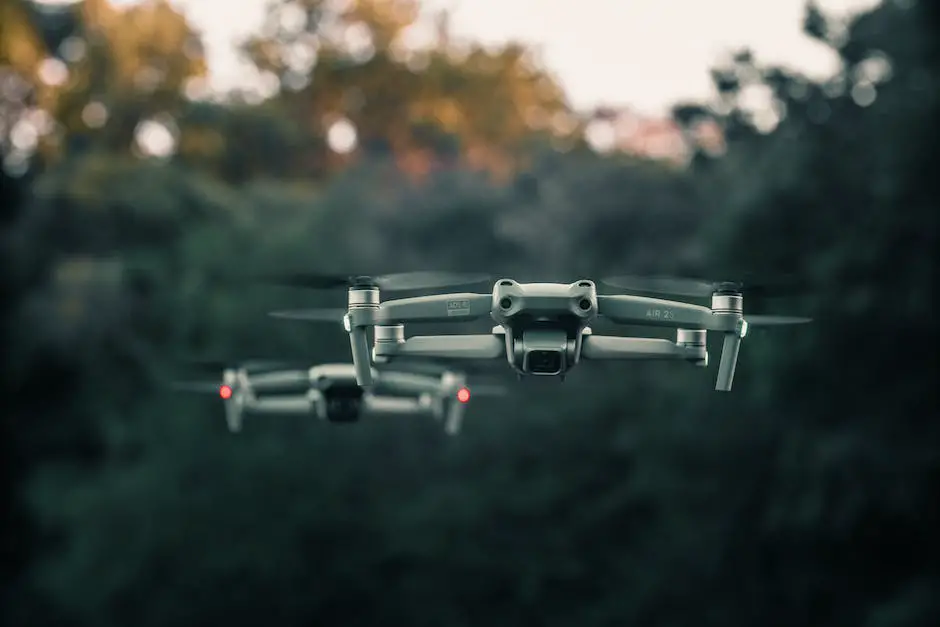
Consequences of Not Abiding by FPV Drone Racing Rules
As thrilling and exhilarating as FPV drone racing may be, it’s important to remember that this sport comes with rules and regulations that must be followed. Failure to abide by these rules can have serious consequences. Not only can it lead to penalties or disqualification from the race, but it can also jeopardize the safety of yourself and others.
One of the potential consequences of not following the rules is colliding with other racers or spectators. This can result in damage to equipment, injuries, or even legal issues. It’s important to maintain a safe distance from other racers and to always be aware of your surroundings to avoid accidents.
Disregarding the instructions or decisions of race officials can also have consequences. Race officials are there to ensure fair play and to maintain a safe environment. Ignoring their authority or causing disruptions can result in penalties or disqualification.
In addition, violating safety protocols or equipment standards can lead to serious accidents. Not wearing the necessary safety equipment, such as goggles or safety glasses, can put your eyes at risk. Failing to check your equipment before each race can lead to malfunctions or failures that can be dangerous.
Overall, the consequences of not abiding by the rules and regulations of FPV drone racing can range from penalties and disqualification to accidents, injuries, or legal issues. It’s crucial to take these rules seriously and prioritize safety at all times. By doing so, you can ensure a fair, safe, and enjoyable racing experience for yourself and others.
Becoming a Responsible FPV Drone Racer
As we wrap up our exploration of the rules and regulations of FPV drone racing, it’s crucial to emphasize the importance of becoming a responsible racer. By following the guidelines and regulations, you not only ensure a safe and fair competition but also contribute to the growth and development of the sport.
To become a responsible FPV drone racer, prioritize safety at all times. This means wearing the necessary safety equipment, maintaining a safe distance from other racers, and respecting the authority of race officials. Remember that safety should always be the top priority.
Additionally, be knowledgeable about the rules and regulations of the race you are participating in. Familiarize yourself with the specific guidelines, including start and finish lines, lap counts, and any obstacles or gates you need to pass through. Understanding the race format and adhering to the rules creates a level playing field for all racers.
Finally, respect the sport and your fellow competitors. FPV drone racing is not just about winning; it’s about embracing the thrill of the sport and enjoying the racing experience. Treat your fellow racers with respect and kindness, and remember that we all share a passion for this exhilarating sport.
Helpful Links
For all your RC Questions, Click HERE
If you are interested in RC cars and trucks, RC World has you covered.
For RC boats and watercraft, check these articles out.
For all your RC Airborne endeavors, we have everything you need.
A Guide To Short Course RC Racing
If you are an RC car enthusiast, then you must have heard of short course racing. When I was new to the RC world I always wondered what…
How Do RC Boats Work?
If you’re considering purchasing an RC boat, you may be wondering: how do RC boats work? Well, this article will discuss the parts of RC boats, from the…
Maximizing Your Electric Skateboard Battery Life
Every electric skateboard enthusiast understands the pure exhilaration that this pastime delivers, but also knows that maintaining peak battery performance for these powerful boards is the utmost in…
Level Up Your Hunting Trip with an E-Bike Adventure
Imagine effortlessly traversing rough terrains, exploring farther distances with lesser effort, all while pursuing the thrill of the hunt. Welcome to the non-traditional world of e-bike hunting trips,…
Fly High: Making Money with Drones
As technology continually evolves, various opportunities arise for tech-savvy entrepreneurs and enthusiasts. One such area that has seen immense growth is the drone industry, with its applications ranging…
Pushing Performance Limits [ Maximizing Cheap RC Cars ]
Top tier RC cars can be pretty expensive. Not everyone has the luxury to invest loads of money on a good quality RC car. But, you’re a RC…
RC Car Drifting: How to Power Up Your Drift Driving
Drifting is a very interesting activity for RC car enthusiasts. While some dabble in it occasionally, others dedicate their entire setups to drifting. Whether you are just getting…
Essential Tips for Easy Electric Bike Commuting
With the rise of eco-friendly modes of transportation, electric bikes have carved their niche as an enjoyable, economical, and efficient choice for many commuters. Whether it’s the quest…
Boost Your Fitness: E-Bike Interval Training Tips
Embracing e-Bike interval training could be the ultimate game-changer in your quest to skyrocket your fitness levels. Before diving headfirst into it, it’s imperative to grasp the basics…

